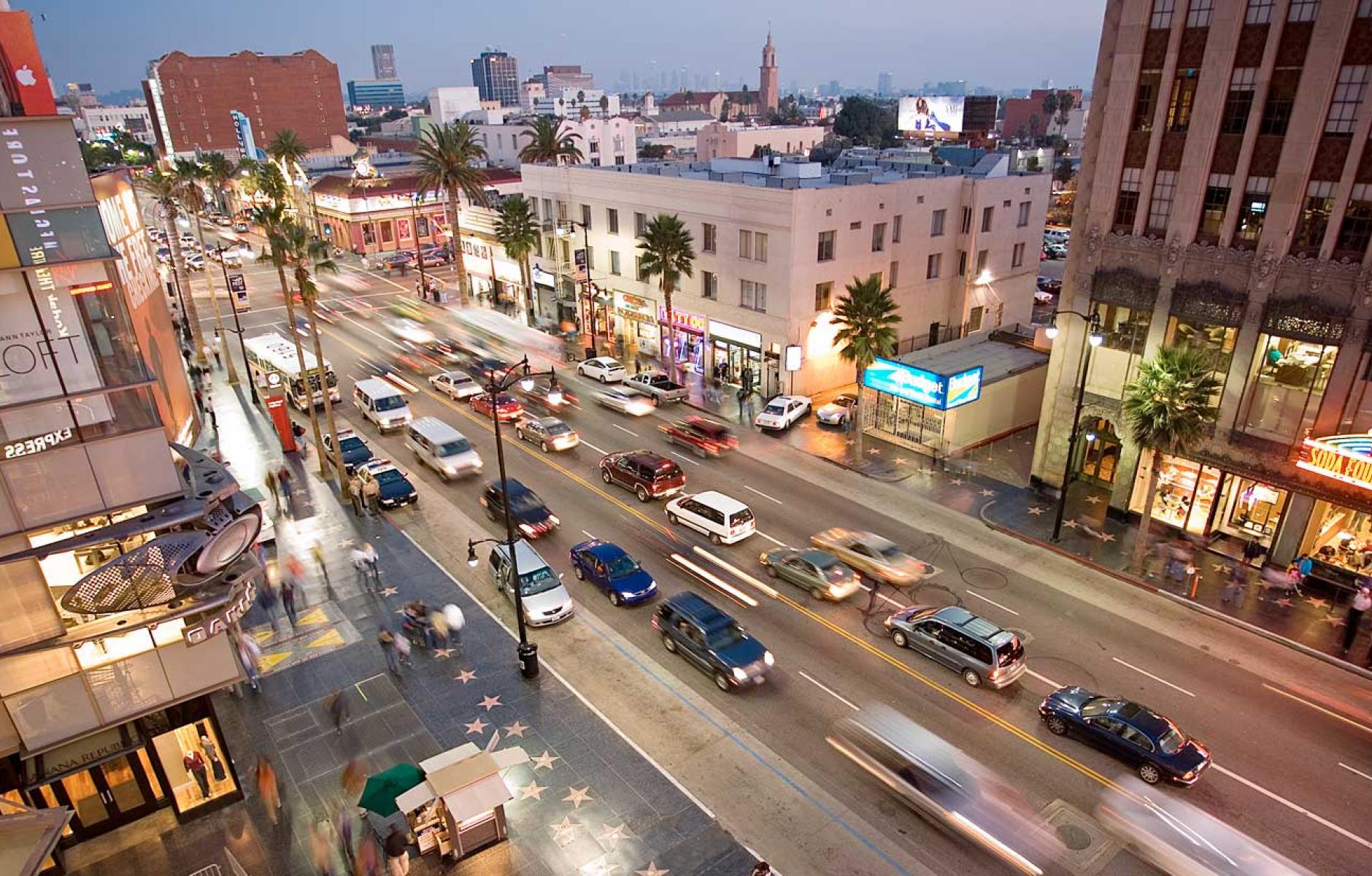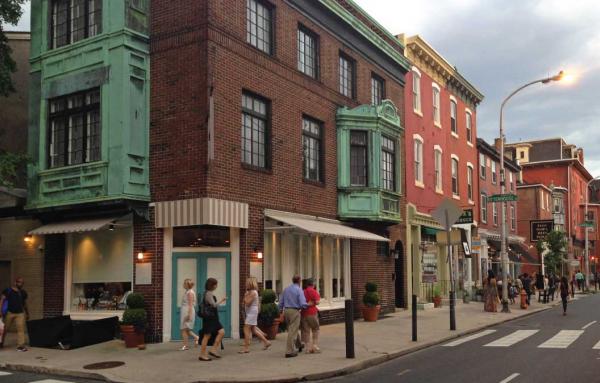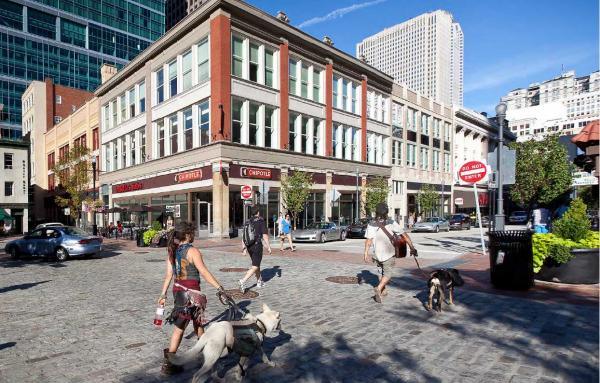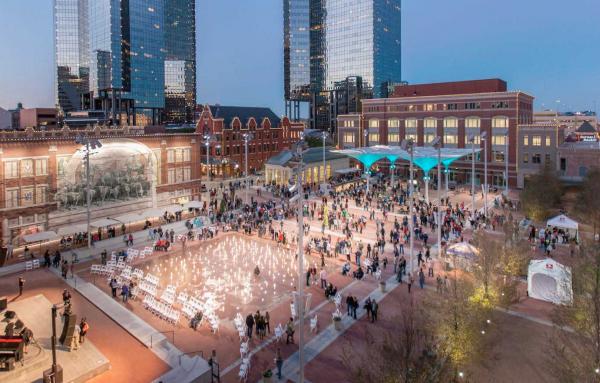
Dynamic urbanism in semi-traditional cities
US cities can be divided into three categories based on physical characteristics. I have written about “traditional cities,” with streets built mostly before 1950, and “sprawling cities,” which grew big during the “age of sprawl” from 1950 to 2010. In between these two extremes are “semi-traditional cities”—which are among the most dynamic places for urbanism in the US today.
Semi-traditional cities are relatively compact and enjoy the benefits of walkability, yet they never experienced the precipitous decline of 20th Century traditional cities. They are a mix of urban and suburban street patterns and fabric—a combination of old and new in about equal measure within the municipal boundaries.
The 10 largest semi-traditional cities include Los Angeles, Portland, Denver, and Miami. They are growing this decade, mostly in infill and transit-oriented development (TOD), at a very strong pace. This group of 10 grew 6.6 percent in the first half of this decade—nearly double the nation’s growth rate of 3.7 percent. You have to go back to the 1980s, when semi-traditional cities still had greenfields to develop, to see such growth. With a few exceptions, these cities have few greenfields left for development today.

These cities have a structure and flexibility to respond to a market demand for 21st Century urbanism. Many of the most interesting urban transformations today, like the Pearl District in Portland, transit-oriented development in LA, and the BeltLine in Atlanta, are taking place in semi-traditional cities.
The table below shows how semi-traditional cities stack up against the traditional and sprawling cities. The semi-traditional cities are closer in geographic size to traditional cities than sprawling cities. They mostly are walkable: The semi-traditional Walk Score of 64 is vastly different from sprawling cities like Phoenix or Jacksonville. The density is right in the middle of traditional and sprawling cities. Non-automotive commute rates are 2.5 times that of sprawling cities.

Infrastructure and housing
Semi-traditional cities kept growing in the second half of the 20th Century, but their street networks were often formed before 1950. Miami is laid out in a grid, for example.
Many nonresidents view Los Angeles as a huge suburban mass—a view that has been reinforced by countless TV shows and movies that celebrate the car culture. But the view is inaccurate. Eighty-seven percent of LA residents believe they live in an “urban” place, according to a report in fivethirtyeight.com. One reason is that LA is laid out in a grid, once served by streetcars. Now that the market is demanding urbanism, that grid lends itself to urban transformation.
But the streets in LA, Miami, and many semi-traditional cities were designed or modified to prioritize automotive travel, so traffic calming is needed in these cities. Other semi-traditional cities like Portland and Arlington are comprised of about half urban grid and half suburban street patterns—but contain nothing like the vast disconnected sprawl of Houston or Phoenix.
Semi-traditional cities had extensive streetcar systems that were torn out in the middle of the 20th Century, and now most of them are working hard to rebuild their rail systems. Portland has been a leader in both transit and modifying streets, especially to accommodate bicycling. Investment in “bicycle boulevards” and bike lanes has boosted Portland’s bike commuting to 6.1 percent—the highest of the largest 50 cities.
Most semi-traditional cities have substantial single-family detached housing—approximately double that of traditional cities. Neighborhood after neighborhood of single-family homes, often bunglalows from the first half of the 20th Century, makes up large parts of semi-traditional cities.
Nearly all US cities have their traditional parts. Even sprawling cities like Houston and Tucson benefit from legacy neighborhoods that are walkable and mixed-use. In semi-traditional cities, these traditional parts are larger—which helps when it comes to retrofit and transformation. Below is a diagram that shows the approximate quantity of traditional neighborhoods in the three types of cities.

Trends in semi-traditional cities
Many semi-traditional cities reformed their zoning in the last 10 to 15 years, which is contributing to urbanism and may be fueling growth. Miami 21, a citywide form-based code (FBC) based on the Smart Code, was adopted in October of 2009. Denver adopted a citywide FBC in 2010. Arlington adopted a FBC for a key three-mile-long growth corridor, Columbia Pike, in 2003, and expanded that code in 2013. Because of the housing collapse, the Columbia Pike code had little effect last decade, but it has had a significant impact since 2010. Portland adopted a FBC in 2005 that applies to transit corridors, mixed-use projects, and pedestrian districts throughout the city. Atlanta approved a FBC for neighborhoods in 1999. Omaha adopted form-based design standards for its downtown core and streetcar corridors in 2010.
FBCs regulate how buildings relate to the public realm—and they also tend to reduce constraints to mixed-use, parking, and density, and streamline processes. Based on the rapid growth that has occurred in these cities since form standards were adopted, these codes have certainly not hindered development. Miami grew by 10.4 percent, Denver by 13.7 percent (the fastest of any semi-traditional city), Arlington by 10.4 percent, and Portland by 8.3 percent, Atlanta by 10.4 percent, and Omaha by 8.5 percent in the first half of this decade. That’s a solid record that the market responds well to form-based codes.
With form coding, Miami is on track to add more people than any decade since the 1920s—when Miami was a boomtown—and possibly even to exceed that mark. Barring some calamity, Denver will add more people in the 2010s than any decade in its history. Arlington is growing faster than it has since the 1950s and adding more people than any decade since the 1940s—when the Pentagon was built, fueling demand for workers. Portland’s population growth may exceed any decade in more than a hundred years, although the 1990s was also very prolific for the City of Roses.
Los Angeles, the largest semi-traditional city, is working on a citywide form-code—perhaps the biggest code reform project in US history.
Transit and transit-oriented development (TOD) are also helping to fuel growth. Portland, with its light rail and streetcar lines that have attracted billions in development, epitomizes that trend. Arlington VA also has fueled substantial growth with five subway stops in its Rosslyn-Ballston corridor on the Orange Line, which opened in December of 1979. Arlington went from a loss of 21,000 residents in the 1970s to a gain of 18,000 residents in the 1980s. Plus the Orange Line fueled massive employment growth.
Cities like Denver and Miami have been steadily investing in rail transit, and substantial urban development is taking place around stations. From the 1990s on, Denver has pursued a policy of urbanism—bringing downtown and LoDo, a warehouse district, back to life, and creating new urban neighborhoods like Highlands Garden Village, Denver Commons, and Stapleton (the former airport, which is built on a street grid but is an urban/suburban mix).

Los Angeles, the city that tore out the most extensive streetcar system in the world, has been building rail and even a subway in recent years (Long Beach is connected to that system through the Blue Line). LA recently committed to a huge expansion of its transit system with Measure M, approved in November. Measure M is worth $860 million a year and will fund six light rail lines or extensions of lines, a downtown streetcar, several bus rapid transit lines, and other transit investments.
Atlanta also passed a half-cent sales tax expected to raise $2.5 billion over 40 years to help fund 7 light rail lines connected to its BeltLine—along with improved bus service and other initiatives. The funding of the BeltLine transit is significant, because the BeltLine is already transforming the city. The 22-mile loop, a former freight rail line, connects neighborhoods all around the city with parks, bike/walking trails, and, when the system is built, transit.
Omaha grew up around the streetcar like most semi-traditional cities, but lost its streetcars in 1952. Omaha is building a BRT line and is considering a streetcar. Honolulu is building a 20-mile long elevated rail line.
Demographics and income
Semi-traditional cities are immigrant cities. They are more than a third Hispanic (36 percent), and 11 percent Asian-American—both well over US averages. The African-American population is 13 percent—about the US average. The white nonHispanic portion is 36 percent.
In these cities, “The Great Inversion” is in full swing. Many people who grew up in the suburbs are moving to cities like Portland, Denver, Atlanta, and Los Angeles. This movement can have negative consequences, such as rising rent and real estate prices.
Median income is higher in semi-traditional cities than either traditional or sprawling cities—but so is the cost of housing. Residents of semi-traditional cities pay a price for the economic dynamism. The rent is higher in semi-traditional cities—averaging more than $1,100/month—and housing and transportation costs combined amount to 51 percent of income.
One reason why this group of cities is so popular is that they are safe. In America, people tend to die violently in two ways—car accidents and homicides. A handful of traditional cities have seen a spike in homicides in the last year or two. No semi-traditional cities have had this problem. Combining reasonably low homicide rates with a car-optional urban fabric leads to a lower-than-average annual violent death rate (homicide and fatal accident combined) in semi-traditional cities—at 14 per 100,000 people average.
Most of these cities have pursued new urban policies in the last two decades—so the record shows at least a correlation between safety and New Urbanism. The safest jurisdiction, hands down, is Arlington. Its combined annual violent death rate is less than 3 per 100,000 people. Arlington is dense and diverse, with a big immigrant population, and it has 10 subway stations. Perhaps more than any other jurisdiction on this list, Arlington has transformed itself physically, from a suburban to an urban place, in the last 35 years.
The safety of semi-traditional cities contributes to their popularity and demand, which contributes to gentrification. Building adequate housing supply requires creative measures. Portland, for example, has adopted policies to increase supply while limiting the size of houses in traditional neighborhoods.
How semi-traditional cities are identified
The three types of cities are categorized according to their growth—or decline—in the “age of sprawl,” which was from 1950 to 2010 in America.
Traditional cities had a 1950 population that was at least 75 percent of the 2010 population, excluding those that substantially expanded their borders since 1950. Sprawling cities had a 1950 population of less than half of their 2010 population. Semi-traditional don’t meet the characteristics of either traditional or sprawling cities. Most have a 1950 population of between 50 percent and 75 percent the 2010 population (Atlanta is the only exception, it’s 1950 population was 79 percent its 2010 population, but Atlanta expanded its borders—so it was not included in the traditional city list. Still Atlanta remains relatively compact at 135 square miles). We set a minimum of 3,000 people per square mile for the semi-traditional list—lower than that indicates too much annexation that makes the urban form less clear.
There are only about 10 examples of semi-traditional cities nationwide with a population above 200,000. It is easier to find traditional cities and sprawling cities—so my numbers include the largest 25 in each of these categories.
Arlington VA is on the semi-traditional city list, even though it is technically a county. Arlington is the Virginia part of the original land that was designated to be part of Washington DC, but it never was incorporated into the capital. In physical respects, Arlington is a city and is governed like a municipality, but just three and a half decades ago it was nearly all suburban in character.
Regional urbanism
Part of meeting demand for urbanism requires building more walkable urban housing in greater metropolitan regions. The 10 semi-traditional cities total about 7.9 million residents, but their metropolitan areas tops 40 million. These metro areas are becoming more urban, according to research by Locus, a part of Smart Growth America.
The metropolitan areas encompassing semi-traditional cities have a “fair share index” of 3, which means that commercial development in their metro area is trending toward “walkable urbanism” at a ratio of about 3:1. The index measures the marginal market share increase or decrease for net absorption of real estate for a given time period, compared to market share at the beginning of that time period, Locus explains. (Regional numbers were not available for Honolulu and Omaha). I arrived at the average figure by taking into account the relative population and fair share index of the 8 regions where data is available.
Commercial development includes office space and multifamily in this case. It does not include retail development—Locus explains that disruptions in the retail industry mean that this development is not a good indicator of walkable urbanism. Single-family housing is also not included.
Does the form of the principal cities influence urbanism? The regions centered by traditional cities and semi-traditional cities both have a fair share index of about 3, while the regions surrounding sprawling cities are becoming more urban—but at a lesser rate of 2.3:1, according to available data.
Urbanism is gaining market share in the regions surrounding semi-traditional cities. This is a reversal of the period 1950 to 2000, Locus reports. During the age of sprawl, “drivable suburban” commercial development was on the rise in every region in America, Locus reports.
Conclusion
The semi-traditional cities are in some respects “goldilocks” cities. In nearly every respect—with the exception of income and rents, which are higher—the semi-traditional cities fall somewhere between traditional and sprawling cities. They have many of the advantages of traditional cities—walkability and urbanism—but they avoided the full-blown urban social and economic problems of the late 20th Century.
Semi-traditional cities have room to grow and define a New Urbanism for the 21st Century. Their main challenges are those of success. Demand for living in semi-traditional cities is high, and so, unfortunately, is the rent.







